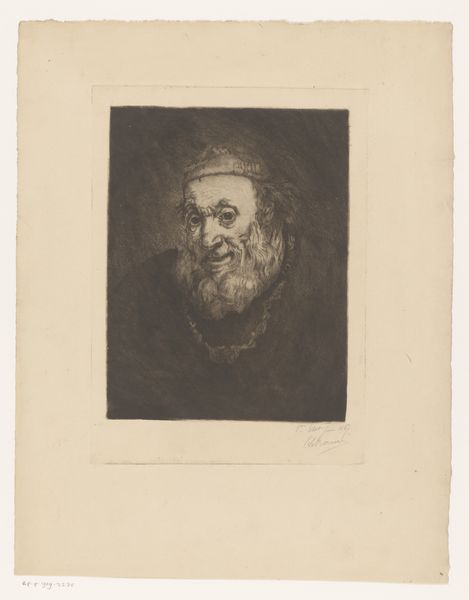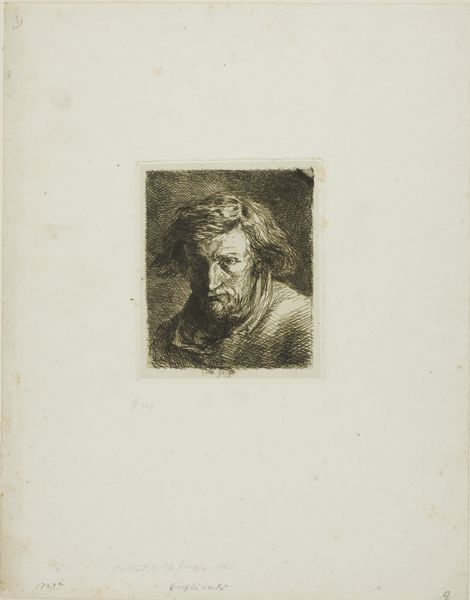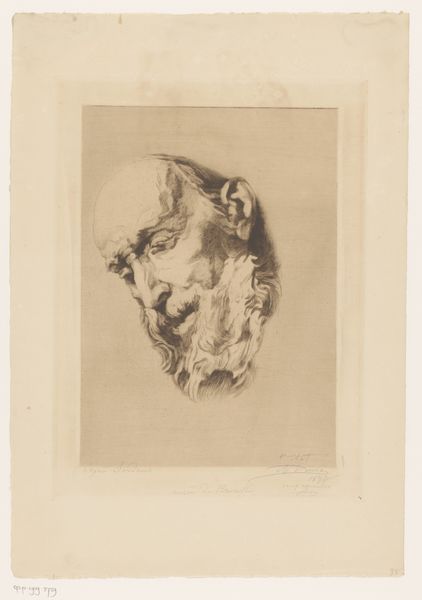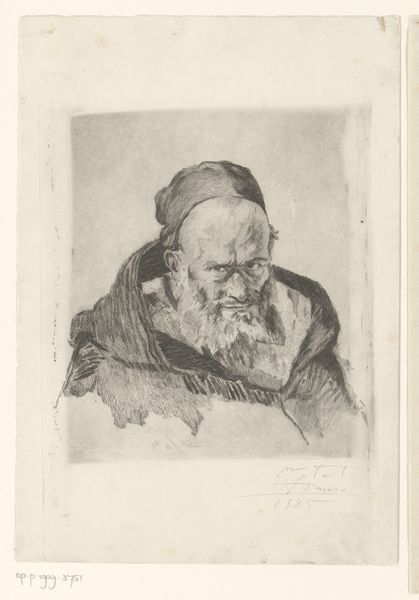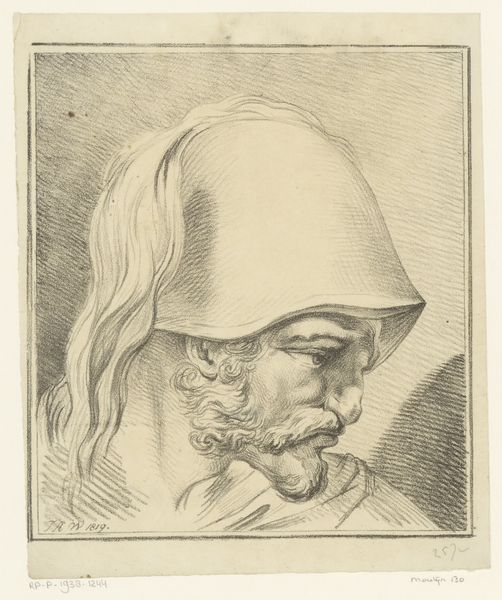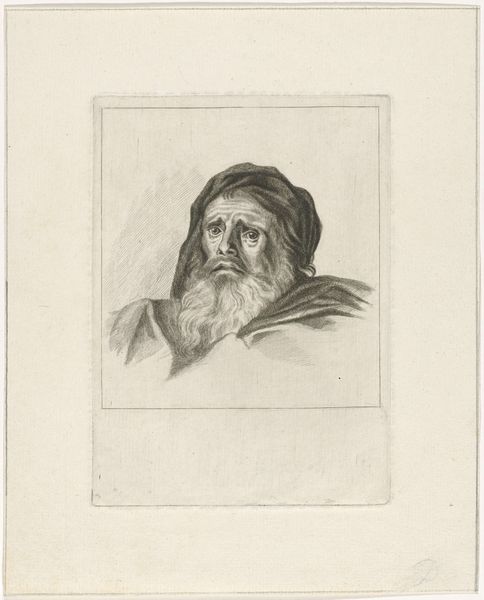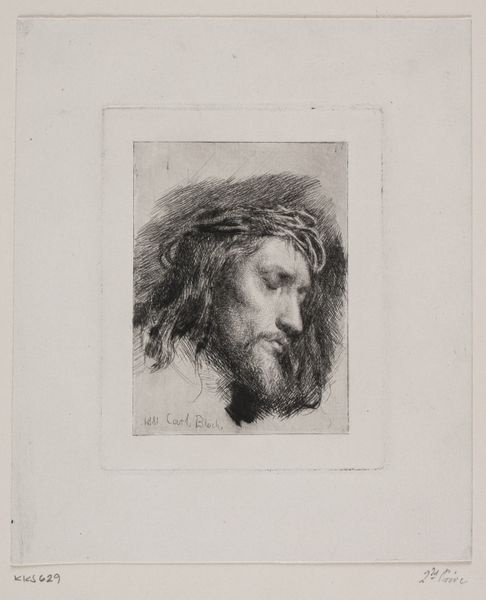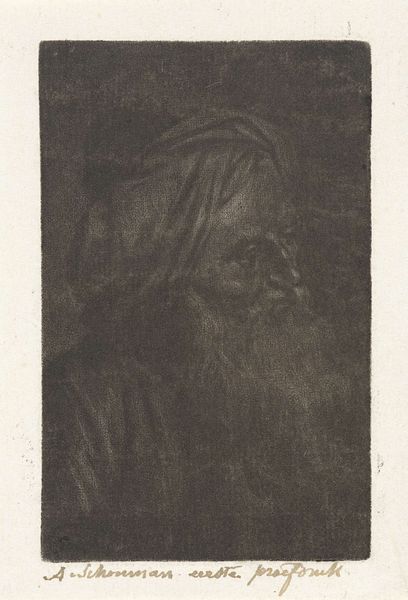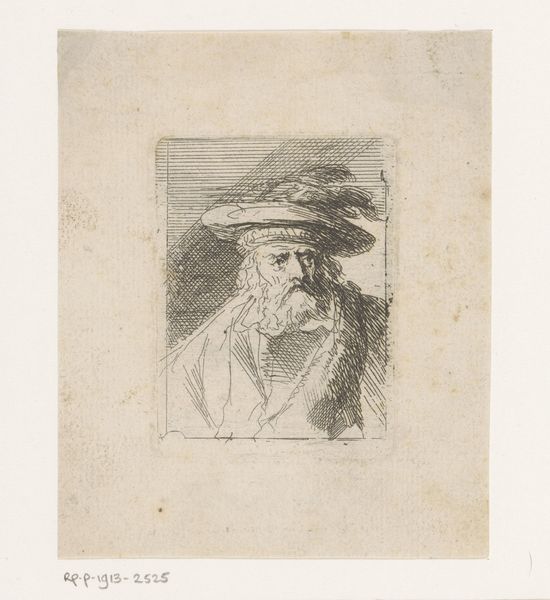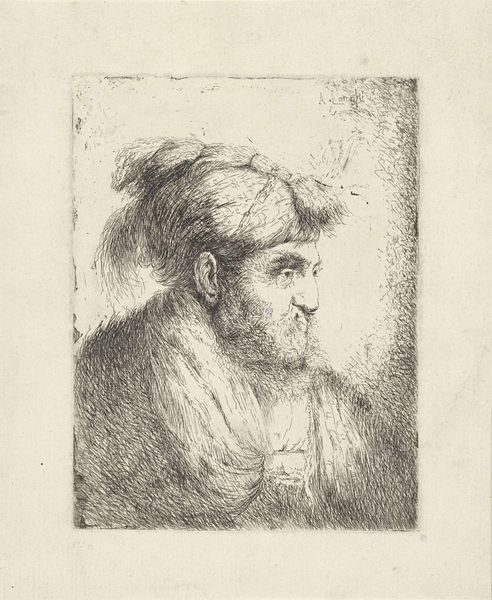
drawing, print, etching
#
portrait
#
drawing
# print
#
etching
#
monochrome
Dimensions: height 101 mm, width 62 mm
Copyright: Rijks Museum: Open Domain
Curator: There’s a quiet intensity in this print; it’s quite striking in its monochrome palette. Editor: This is 'Ben Ouènnès,' an etching by Philip Zilcken, created between 1867 and 1890, currently housed in the Rijksmuseum. Curator: The textures Zilcken achieves are compelling. I’m drawn to the etching lines – how they delineate form and imply shadow. What sort of social or historical contexts informed this type of portraiture, beyond the material considerations of production? Editor: These ethnographic portraits were often tied to colonial ventures and the “scientific” documentation of different racial types. So, while we can appreciate the technical skill involved in the etching process, we must consider the unequal power dynamics inherent in the gaze. This piece reinforces Western European narratives about the "other," doesn’t it? Curator: It’s definitely worth acknowledging those structures, yes. And consider how this piece, as a print, participates in a culture of reproducibility; these images circulated, shaping perceptions of people outside the European gaze. Editor: Absolutely. Who was the piece aimed for? An elite, academic, or curious public with vested interest in exoticized representations, which solidified a supposed superiority in their views. Curator: Looking at the details of Ben Ouènnès clothing and the texture of the beard—we have evidence of his appearance from what we are able to extract. How might the labour involved in printing and distribution intersect with the representation of this person? Was Ben Ouènnès paid? Or even aware of this piece? Editor: We need to grapple with those questions. The image isn’t just about aesthetics. Whose story isn't told? And why were images such as this printed instead of others. What narratives do the makers try to write to us, today, in 2024? Curator: Understanding the labor involved is part of understanding the whole story that materials alone, can never tell. Editor: True indeed. Looking deeper is what allows us to learn, connect, and understand a work from all perspectives.
Comments
No comments
Be the first to comment and join the conversation on the ultimate creative platform.
